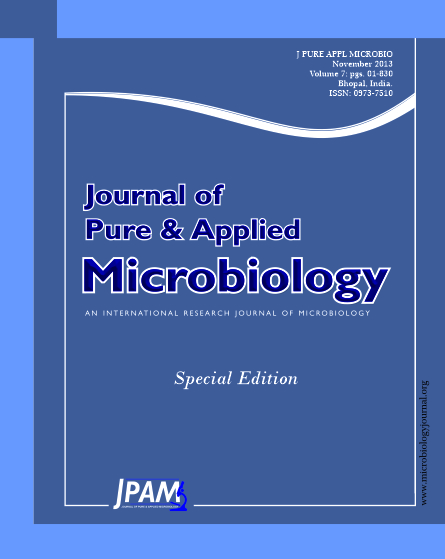An extracellular protease was produced by a thermohaloalkali tolerant bacterial strain, designated B300, which was isolated from a salt-affected soil sample collected at Beni-Suef city, Egypt. The bacterial strain was assigned to genus Halobacillus based on the phylogenetic analysis of the 16S rRNA gene. It was found that the protease was produced at the end of the exponential growth phase. The enzyme was purified and characterized by SDS-PAGE and its molecular mass was about 56 KDa. The enzyme had a wide salt range and was dependent on salt concentration for activity, with optimum activity at 55°C and pH 10 in the presence of 10% NaCl. It was inhibited by leupeptin, aprotinin, E-64 and PMSF, while chymostatin had an extremely low inhibition effect. Therefore, the protease was characterized as a trypsin-type serine or subtilisin-type, but not as a chymotrypsin-type. It was obvious also that the protease under investigation is not metalloproteinase-type or aspartic-type. The production of the enzyme in the culture medium was influenced by the medium composition, temperature, pH and NaCl concentration; and it was induced by the presence of yeast extract in the medium.
Protease, Characterization, Thermohaloalkali Tolerant, Halobacillus sp
© The Author(s) 2013. Open Access. This article is distributed under the terms of the Creative Commons Attribution 4.0 International License which permits unrestricted use, sharing, distribution, and reproduction in any medium, provided you give appropriate credit to the original author(s) and the source, provide a link to the Creative Commons license, and indicate if changes were made.


